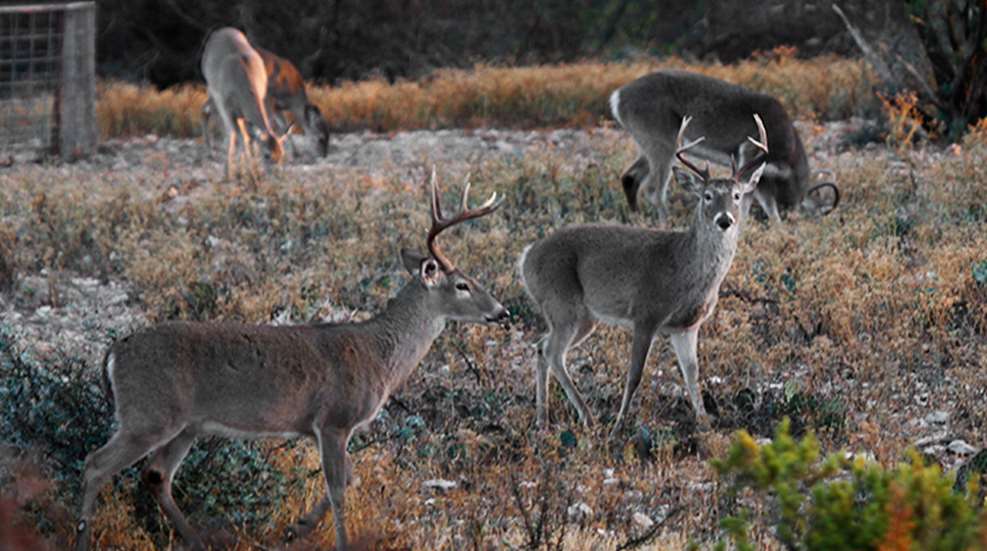
A while ago a friend joined me on a deer hunt. Although he was a rookie deer hunter, he was a medical professional who’d grown up shooting guns. Back at the truck after the hunt, I asked him if he’d seen anything. His eyes were as big as pie plates when he described the huge buck he’d seen.
“How far away was he?” I asked.
“Heck, he was only about 25 yards!”
“Well,” I said, flabbergasted. “Why didn’t you shoot?!”
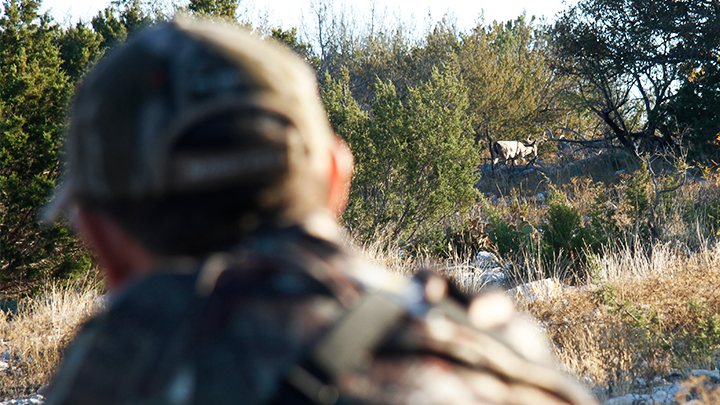
“Because he was walking straight toward me, and he never turned broadside. Then he went behind some trees and I never saw him again.”
“Let me get this straight,” I said, digging for some explanation on why the buck wasn’t currently residing in the back of the truck. “You had a clear shot at his chest with your .30-06—at 20 yards—and you didn’t shoot?!”
“Well, no,” he said. “I didn’t want to wound such an incredible animal, and I’ve always heard I should shoot a deer behind the shoulder.”
I shook my head in disbelief. “Dan,” I said, “That .30-06 bullet would’ve gone straight through that buck’s sternum, out his backside and destroyed everything in its path and not stopped until it hit an oak tree down by the creek.”
“Really?” he said, now becoming visually disappointed for the first time. And that’s when it dawned on me: Humans are not born knowing where to aim a rifle to best kill an animal; we must be taught via some education on basic deer physiology and actual hunting experience. So what follows is a primer on shot placement.
The Basics of Shot Placement
The goal of each shot at an animal is to guide the bullet to the perfect place on the animal so the bullet enters the body and disables or destroys vital body systems to swiftly kill the animal, thereby minimizing its pain and suffering. A perfect shot also makes recovery of the animal easy.
(The term “vitals” means any living tissue, artery, vein or organ without which the animal cannot live. Vitals include the heart, lungs, brain, spinal cord, liver and major veins and arteries such as the jugular, femoral, aorta and others.)
However, in choosing the perfect spot by which to aim, hunters must keep in mind that animals are not two-dimensional objects like paper targets. In order for a bullet to enter an animal’s body, penetrate through flesh and bone as it traverses the animal to reach and destroy vitals, hunters should visualize the animal in three-dimensional terms.
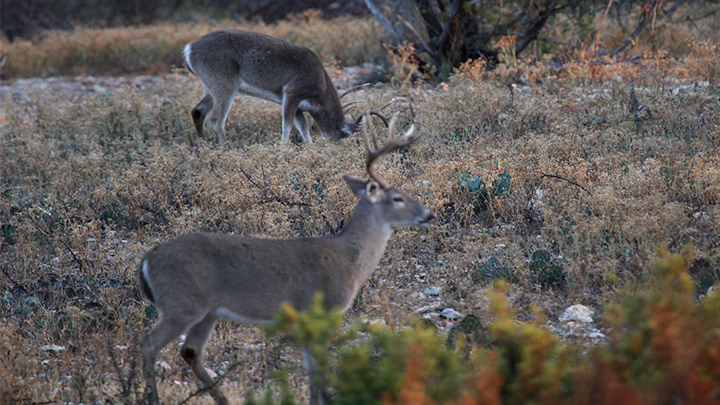
As a visual aid, imagine a rectangular cardboard box. Then envision an orange suspended by a string so that the orange floats in the front ⅓ of the box. The box represents a deer’s body and the orange is its heart. As the animal (the box) moves or you walk around the box, the point at which your bullet must strike the box—so that it travels in a straight line through it and hits the suspended orange within it—changes. Therefore, each time you see an animal you wish to kill, imagine this orange (its heart) suspended within the animal’s chest and adjust your aiming point as necessary. The good news is, you don’t have to actually hit the heart to kill the animal. A shot slightly behind it will hit lungs, killing it, while a shot above the heart will hit the aorta or other vital arteries also killing it quickly.
But before we delve into various shot angles, we must first discuss rifle calibers, because the two are entwined.
Rifle Calibers and Shot Angles
As a general rule, the more powerful the caliber, the easier it is for its bullet to reach vitals and also kill with hydrostatic shock. Taken to an extreme to illustrate this point, if you were to shoot a deer with a cannonball, any hit to its body would almost certainly kill it, even if you hit the animal in non-vital areas such as its stomach or brisket. The sheer force of the trauma created by the cannonball’s tremendous energy would break enough bones and cause enough trauma, shock, internal and external bleeding (hemorrhaging) that the animal would certainly die, even if the cannonball didn’t hit its heart, brain or lungs. But because this is a ridiculous example mentioned only to convey a point, let’s take a more realistic, albeit very powerful rifle caliber, the .300 Winchester Magnum.
If you choose to hunt whitetail deer with a .338 Win. Mag., for example, you can just about shoot the deer from any angle, from any reasonable hunting distance and kill the animal provided your bullet reaches vitals, because the cartridge’s 220-grain bullet traveling at nearly 3000 fps has enough energy to penetrate the entire length of any deer regardless of what bones, flesh or hide it first encounters. This means that if the deer were facing directly away from you, you could aim for a point on the deer’s rear end that would send the bullet through the deer’s ham or hip, through its bowels and stomach, into its thoracic cavity, through its heart and/or lungs and out its sternum. The deer would expire very quickly. That’s the advantage of shooting a large, heavy caliber. But its disadvantages are numerous—mainly because its recoil makes it more difficult to shoot well and certainly not as fun to shoot often. It is also unnecessarily destructive to deer, something hunters often refer to as “overkill.”
On the other hand, let’s consider a caliber on the low end of the power spectrum, perhaps a .22 Winchester Magnum Rimfire (WMR). If you hit the animal in the perfect spot, such as the thin portion of the skull near the temple from a close-range distance so the tiny, 40-grain bullet enters the cranium and pierces the brain, the animal will die swiftly. However, this shot requires pin-point placement and even then, it can fail if something goes wrong. Meanwhile any other shot, such as a shot to the deer’s chest, has a great chance of being impeded by bones and muscle so that the bullet does not reach vitals; as a result, the animal will merely be wounded. Therefore, the first rule of shot placement is to use a rifle caliber with enough energy for the game and the range at which you intend to use it. Then choose a premium, controlled expansion bullet.
Now that we have examined scenarios on the extreme ends of the caliber spectrum, let’s turn to typical big-game calibers such as the .243 Winchester on up to the 7mm Remington Magnum. Here are my recommendations on shot placement.
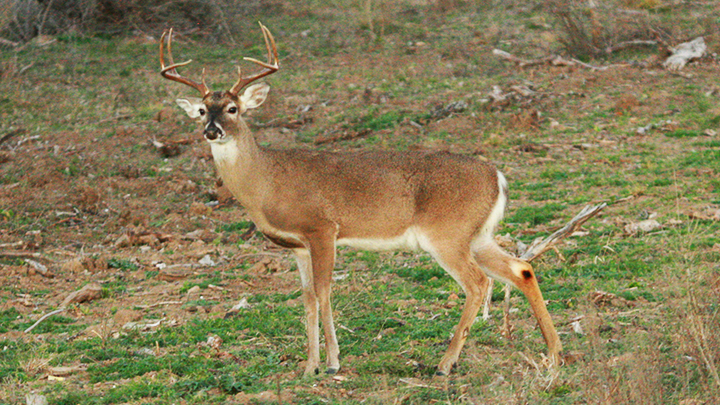
Behind the Shoulder/Lung Shot
For any deer-sized animal standing broadside, or at 90-degree angle to the hunter, a shot anywhere to the chest area is desirable. If you are using a smaller caliber such as .25-caliber rifles or smaller, I recommend a shot directly behind the front shoulder, one-third of the way up from the bottom of the deer’s belly line. This shot will penetrate through both lungs, and the animal will run for 35-125 yards (until all the oxygen in its brain expires) and pile up dead in seconds. If your bullet hits slightly forward, you’ll hit vital veins and arteries going to the heart and your animal most likely will drop on the spot. If you hit slightly back or slightly low or slightly high, you’ll still hit lungs, and the animal will die swiftly. This shot provides the shooter the largest margin for error.
If ever you are unsure of your rifle’s power, your bullet’s design, the range or the toughness and tenacity of the animal, just aim behind the shoulder on a broadside animal. This is the best way to bring down a large animal even if you are slightly undergunned, as there are no major bones—only ribs—guarding the lungs. Animals cannot live with two punctured lungs.
Shoulder Shot
For modern, high-velocity calibers larger than .25 (and if using a premium, controlled expansion bullet), I recommend aiming just below the point of the shoulder, one-third of the way up from the belly line. Perfectly placed shots on the shoulder with an adequately powerful rifle and quality bullet will penetrate through the front shoulder, travel through the heart or aorta and out of the offside shoulder. This will not only kill the animal nearly instantly, but often render it immobile so that it doesn’t run at all. The downside is that your rifle must have enough power at a given distance to penetrate the shoulder. If you’re unsure, simply aim behind it.
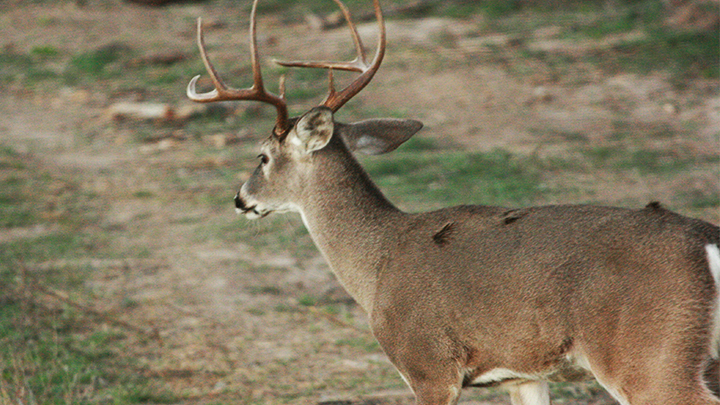
Quartering Away
Things get a little more complicated when the animal is not standing perfectly broadside. When the animal's head is slightly farther away from you than its rump, the angle is called “quartering away.” All quartering-away shots require the bullet to enter the animal some distance behind the shoulder to reach vitals. For slightly quartering-away shots, simply aim tight behind the shoulder, about one-third of the way up from the belly line, and you should hit lungs and heart and the plumbing that supplies both with blood. The animal will expire quickly.
However, if the angle is more extreme, a good rule of thumb here is to aim at the offside shoulder, or the shoulder farthest away from the shooter. This means that if the animal is standing at an extreme angle, the hunter might actually have to aim just behind its rib cage, so the bullet will traverse the stomach and continue its forward angle to reach the heart/lungs. However, such a shot should only be attempted if the shooter is using a caliber of adequate power to penetrate this distance. If you are unsure, your best bet is to wait until a better shot angle presents itself.
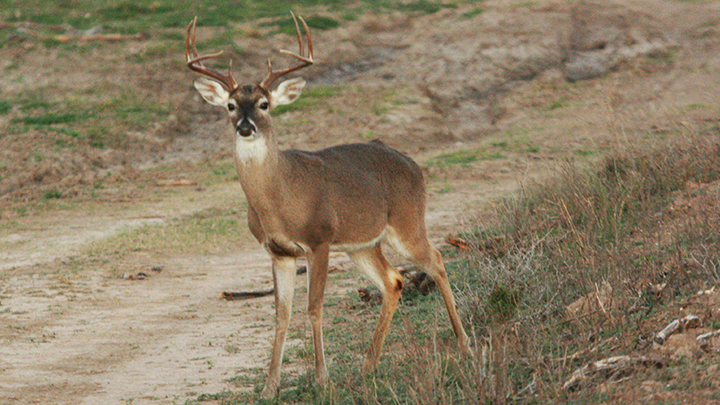
Quartering Toward
Anytime an animal’s front shoulders are closer to you than its hips, it is “quartering toward” you. For this angle, any bullet placed on the near side of the sternum between the animal’s shoulders will penetrate into the heart and lung area, killing it quickly. But you should never aim “behind the shoulder” on an animal quartering toward you.
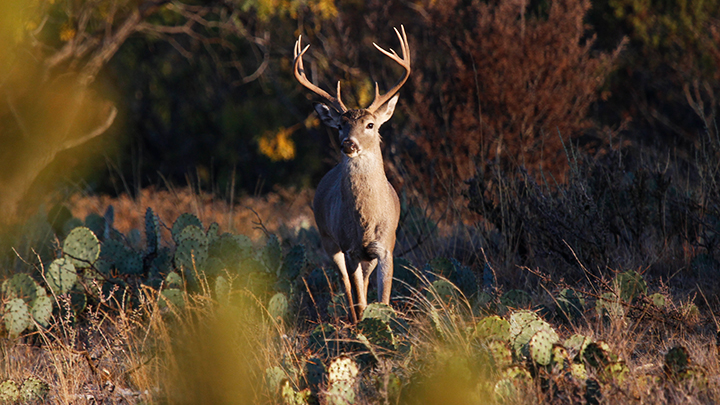
Head On
“Head on” means the animal is facing you. If its head is up, likely it means its chest is exposed. Remember the orange (it’s heart) dangling by a string from its shoulder blades? Try to hit it or the aorta just above it by aiming at the junction of the neck and the chest. Such a shot will devastate the animal and kill it quickly. If the animal’s head is down, covering its chest, wait for a better moment.
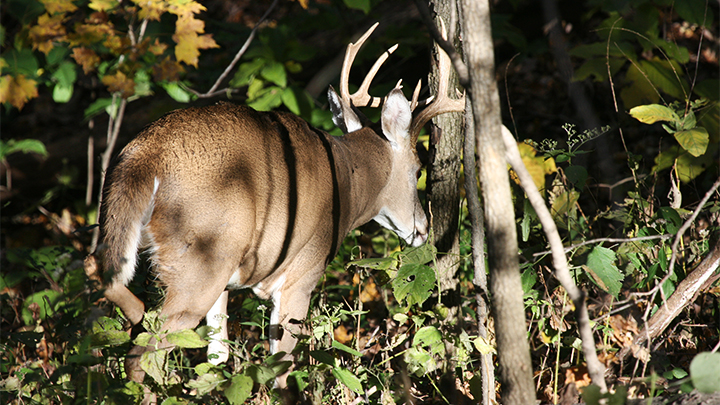
Straight Away
If an animal is facing straight away from you so that its rump is directly toward you and its head is directly away, you have an option, but it’s not great. Provided you have a heavier caliber like .270 Winchester or more powerful, and a premium controlled-expansion bullet, you can aim directly under the base of the animal’s tail to send the bullet through the animal’s bowels and into its heart/lung area. However, there are plenty of things that can go wrong with this shot—not to mention its untidiness—so most times your best option is to wait for a better shot angle.
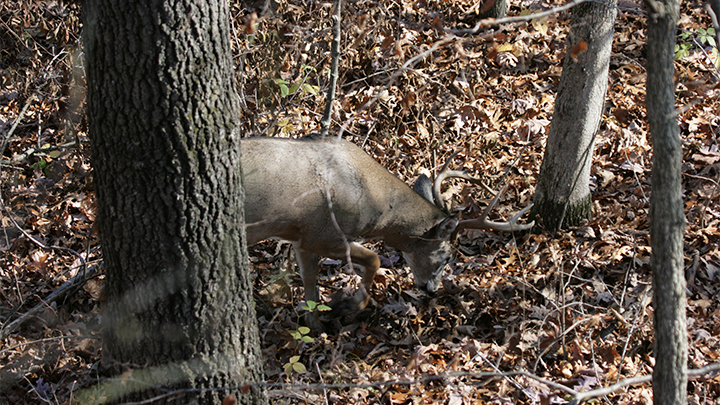
From Above
Millions of American hunters shoot deer from treestands. While the angle is different, the concept remains; the bullet must enter higher on the animal so as the bullet continues its downward angle it will hit heart and/or lungs within the chest cavity. If the animal is straight away (and below) or head on (and below), aim through the shoulder blades so the bullet will pass through the spine and into the vitals.
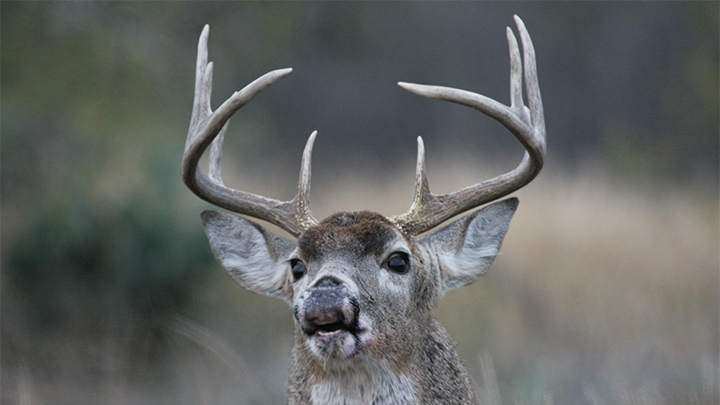
Head Shot
Head shots are instantly deadly if done well, but they require pinpoint precision or else they can end in disaster. If your bullet is too high, you’ll miss or just knock the animal out. Too low or forward and you’ll hit the animal in the jaw and it will run off to eventually die of infection or starvation—and that’s why I avoid head shots unless one is absolutely necessary.
The High Shoulder Shot
Frequently I hear hunters say their favorite shot is high, just above the shoulder. They say that with an adequate rifle, it kills like lightning because it can send devastating shock waves through the spinal cord and instantly turn out the animal's lights. But I don’t like it. I’ve seen too many animals survive this shot because the bullet was too high to hit the heart, too far back to hit the lungs, too high to immobilize the shoulders and too low to hit the spinal column. I just believe the shoulder or behind the shoulder shot is a higher percentage play.
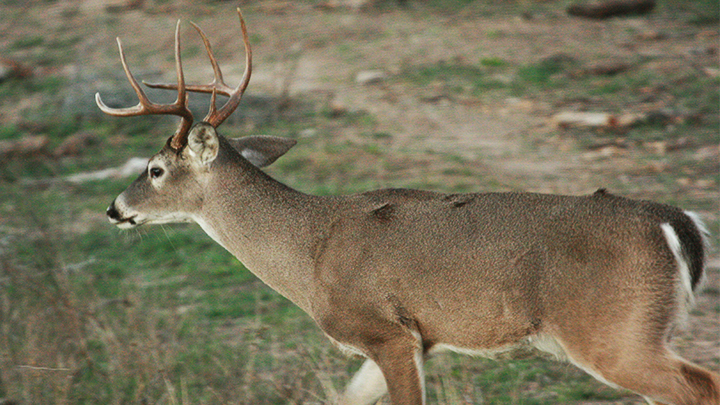
Neck Shot
I know many veteran hunters who swear by neck shots; they say that because of all the vitals in the neck, including the spinal column, major vessels leading to the brain and the wind-pipe, the shot is deadly. Most times it is. Trouble is, sometimes when an animal's hair is fluffed up or it’s holding its head in an odd way, exactly where the middle of the neck is can be tough to discern. I’ve taken many neck shots and most turn out just fine. Certainly, if it’s the only shot I have and the range is moderate, I’ll take it. But given an equal opportunity, I’ll take the heart/lung shot over the neck every time.
Over time and with experience, it’ll become so that choosing the best shot placement for each dynamic scenario becomes second nature. And then the real challenge begins: That is, actually making a perfect shot as buck fever sets in.



































